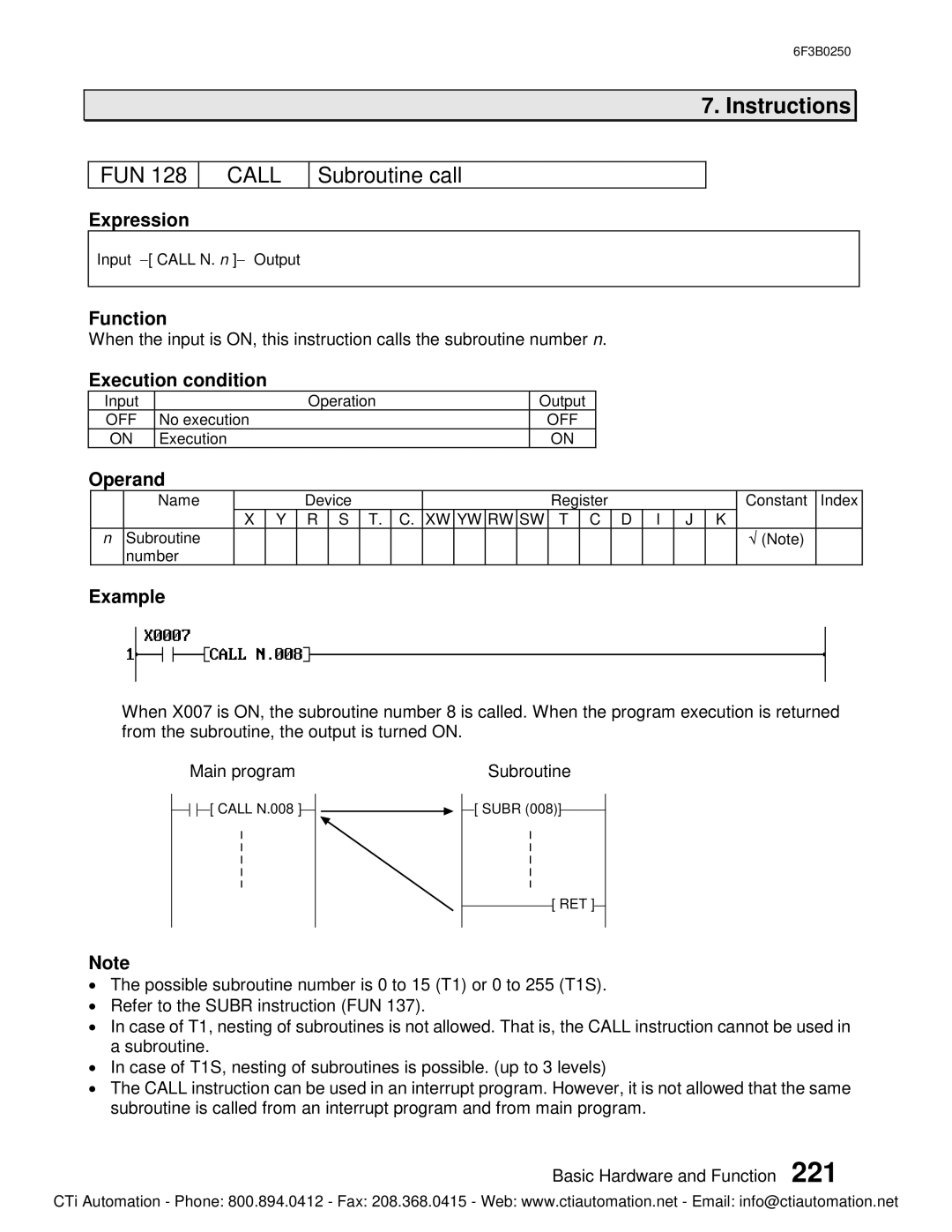
6F3B0250
7. Instructions
FUN 128
CALL
Subroutine call
Expression
Input
Function
When the input is ON, this instruction calls the subroutine number n.
Execution condition
Input |
| Operation | Output |
OFF | No execution |
| OFF |
ON | Execution |
| ON |
Operand
| Name |
|
| Device |
|
|
|
|
|
| Register |
|
| Constant | Index | ||||
|
| X | Y | R | S | T. | C. | XW | YW | RW | SW | T | C | D | I | J | K |
|
|
n | Subroutine |
|
|
|
|
|
|
|
|
|
|
|
|
|
|
|
| Ö (Note) |
|
| number |
|
|
|
|
|
|
|
|
|
|
|
|
|
|
|
|
|
|
Example
When X007 is ON, the subroutine number 8 is called. When the program execution is returned from the subroutine, the output is turned ON.
Main program | Subroutine |
[ CALL N.008 ]
Note
[ SUBR (008)]
[ RET ]
·The possible subroutine number is 0 to 15 (T1) or 0 to 255 (T1S).
·Refer to the SUBR instruction (FUN 137).
·In case of T1, nesting of subroutines is not allowed. That is, the CALL instruction cannot be used in a subroutine.
·In case of T1S, nesting of subroutines is possible. (up to 3 levels)
·The CALL instruction can be used in an interrupt program. However, it is not allowed that the same subroutine is called from an interrupt program and from main program.
Basic Hardware and Function 221
CTi Automation - Phone: 800.894.0412 - Fax: 208.368.0415 - Web: www.ctiautomation.net - Email: info@ctiautomation.net
